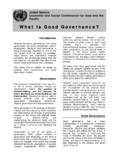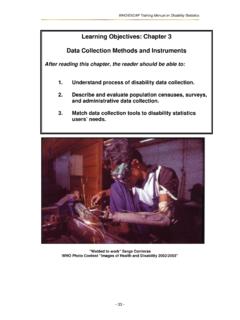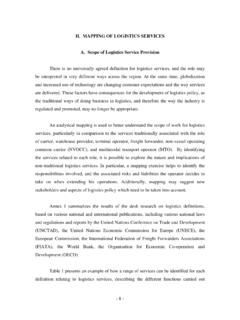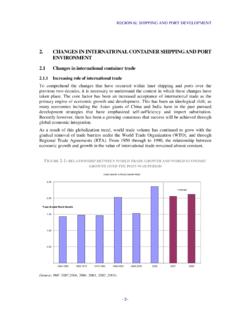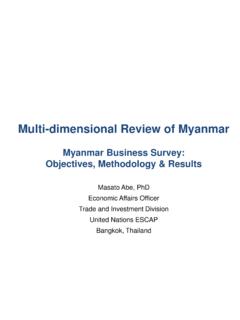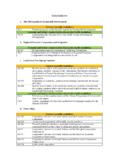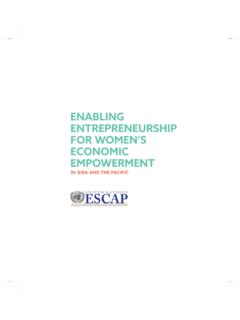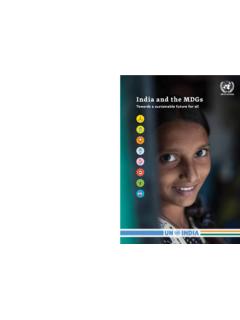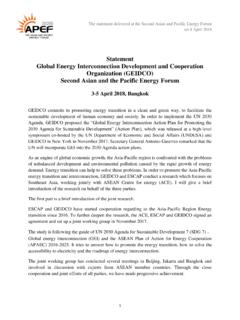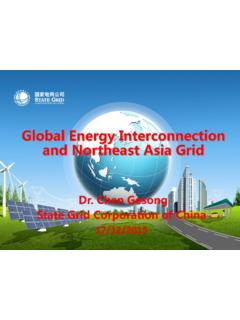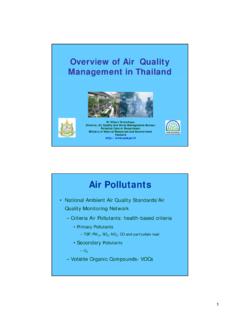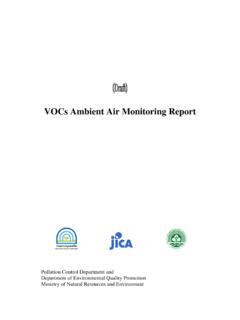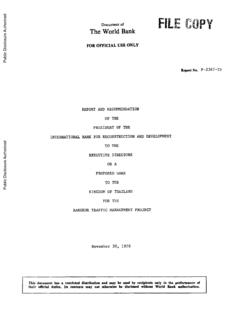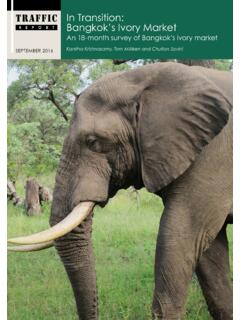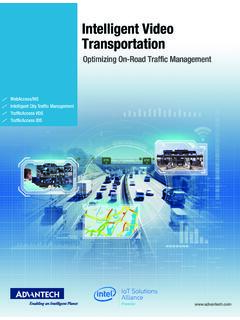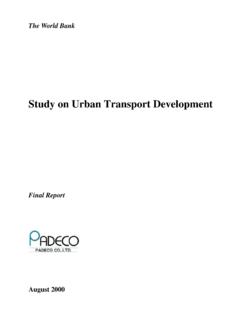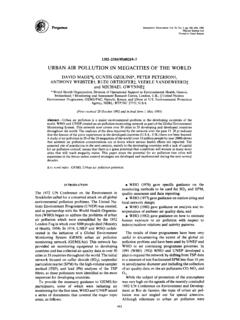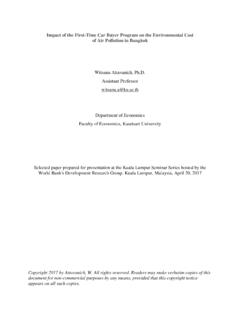Transcription of Low Carbon Green Growth Roadmap for Asia and the Pacific ...
1 Key point The role of government is critical in ensuring that public-private partnership is in line with the goals of public transport economic efficiency, ecological resilience and social was a two decades, bangkok s traffic congestion was legendary and growing worse. The impact on the city s GDP was considerable. With high-rise development on the horizon that would bring more people into the city, moving people around without a car became an was done?The city planners opted for an elevated metropolitan rail system the bangkok Mass Transit system (BTS).
2 The BTS opened in December 1999 with two lines and 23 stations. Operated by the bangkok Mass Transit system Public Company (BTSC), the BTS covers much of the central business district. The two intersecting lines now total 55 kilometres and have added seven stations. The BTS has considerably helped ease bangkok s traffic congestion and provides an environment-friendly transportation alternative. Each train carries more than 10,000 passengers per day a similar number of people would induce the trips of 800 motorized vehicles on the road. In March 2011, the system averaged 505,000 daily riders and is growing steadily.
3 Public-private partnershipBangkok s government, the bangkok Metropolitan Authority (BMA), signed a 30-year mixed build-operate-transfer concession with the BTSC, ending December 2029, although it is renewable for ten years. The BMA awarded the BTS concession under authority from Thailand s Ministry of Interior. The BTSC, a special-purpose private company, is responsible for 100 per cent of the design, financing, construction, operation and management of the capital asset and The total project cost of the initial 23 km system was approximately 55 billion Thai baht (US$ billion), up from an initial 32 billion baht due to currency There are no revenue sharing or concession fees for the BMA.
4 However, the BTSC must ensure adequate levels of safety in construction and operations. The public sector is responsible for providing right-of-ways, monitoring construction and operations as well as approving fare increases. The concession contract provided for fare increases every 18 months, with the increase in consumer price index. There were also concession provisions for increases in the event of exceptional circumstances, including major changes in foreign exchange learnedThe BTS, which is designed, constructed and operated entirely by a private company, displays several benefits of private operation.
5 First, the private operation enables efficiency of expenditure and the maximizing of revenue and profit. For instance, the BTSC recorded its first profit in 2009 with the completion of restructuring the BTS, which cost 67 billion baht in late 2008. The BTSC is currently covering operating costs, with revenue from the mass transit system , media (advertising in and on the train and stations), rental property and other service business. The biggest portion of the BTS revenue contribution comes from the mass transit fares (65 per cent) and the media business (23 per cent).
6 It also promotes maintaining high-quality service and creative marketing for additional revenue. Private operation has its risks. Because the responsibility for the costly investment is solely left to the BTSC, it is difficult to expect an extensive BTS network, which is socially and ecologically desirable but may not be com-mercially viable. In addition, the lack of coordination with other municipal transportation services limits overall transportation efficiency. There is a lack of physical and fare integration with most of the other urban transporta-tion methods (bus, subway and boat).
7 Considerations for replicatingBecause private interests often differ from public interests they are more short-sighted and usually do not factor in social and ecological costs as well as the benefits. Governments need to make sure that these factors are considered in infrastructure projects when engaging the private sector. In the case of bangkok s BTS, this was done through monitoring mechanisms for construction and maintenance and by restricting ticket price increases. Although this approach may guarantee economic efficiency, more public guidance may be needed to establish a transport system that also reaps the most benefits for society and the reading A Tale of Three Cities: Urban Rail Concessions in bangkok , Kuala Lumpur and Manila, by World Bank (Washington, , 2004).
8 bangkok s Mass Transit: Planning, Design, Financing, Development: The Mega Projects Update 2002 2009, by Cobb ( bangkok , TransGate International Development Consultants, 2009). Available from Martin Spicer, BTS skytrain case study: The experience of bangkok s first private mass-transit concession , PowerPoint presentation at the World Bank Transport Learning Week 2006, Washington, , 3 April, 2006. Available from (accessed 16 November 2011).2 Prako Chirakiti, Public and private partnership in bangkok , Powerpoint presentation.
9 Available from (accessed 16 November 2011); Poona Antaseeda and Krissana Parnsoonthorn, They said pigs would never fly , 1999 Economic Review: Year-End, 1999. Available from (accessed 16 November 2011).Rising above the congestion bangkok , Thailand s mass transit system CASE STUDYLow Carbon Green Growth Roadmap for Asia and the PacificKey point The role of government is critical in ensuring that public-private partnership is in line with the goals of public transport economic efficiency, ecological resilience and social was a two decades, bangkok s traffic congestion was legendary and growing worse.
10 The impact on the city s GDP was considerable. With high-rise development on the horizon that would bring more people into the city, moving people around without a car became an was done?The city planners opted for an elevated metropolitan rail system the bangkok Mass Transit system (BTS). The BTS opened in December 1999 with two lines and 23 stations. Operated by the bangkok Mass Transit system Public Company (BTSC), the BTS covers much of the central business district. The two intersecting lines now total 55 kilometres and have added seven stations.
